The title is a reflection that I have (too) many cameras and that there remains a decent suite of emulsion available on the market. Now before you have visions of me lugging five camera combinations to my local graveyard, the films were not all exposed on the same day. It is a favourite camera/lens/film testing ground of mine. Overlooking the River Medway and surrounded by woodland, St Michael & All Angels has always seemed a great place to be buried… It’s also a great place to take photos!
For the opening shot, I wanted to highlight two things. First, the setting of the site, and second, the reliable combination of XP2 and my travel-compact, the Yashica J2. It was too bright on the day for ISO400, so pulled it back a bit at post-production and I’m happy with the result. The lens on the J2 is nice – there’s no need for an expensive T series cousin!
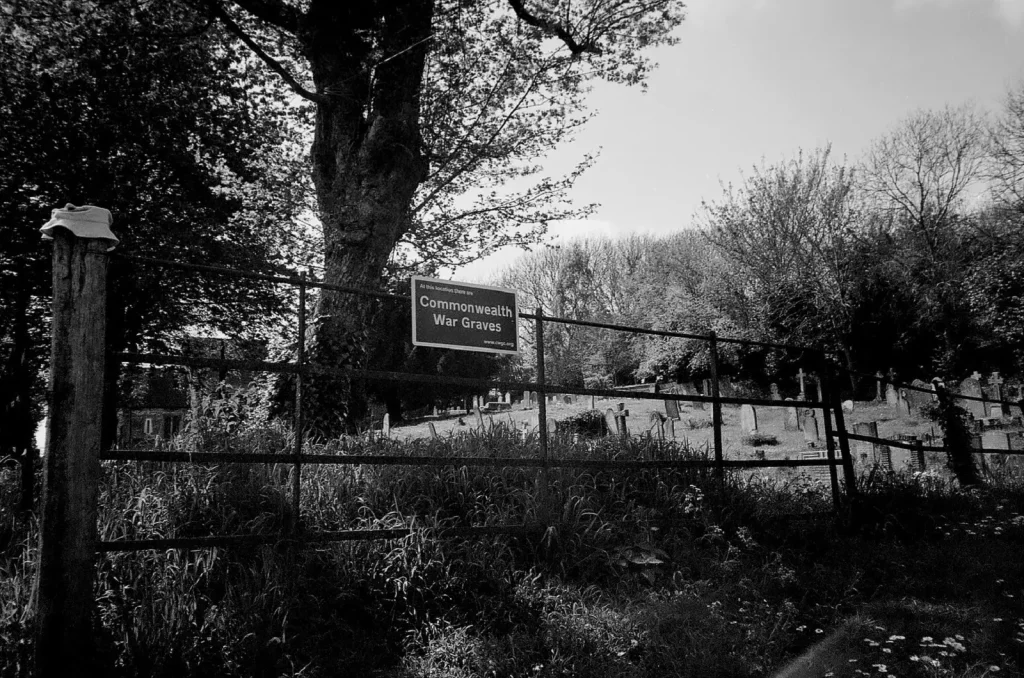
Medium format next. The Pentax 6×7 is a 1980s SLR, with a mirror that packs a mighty slap (faster shutter speeds are the order of the day). Now I do like a big camera, but this weighs in rather hefty. I recently bought a 150mm f2.8 lens with a notion of using it for portraiture. With its potential for a narrow depth-of-field, I thought I’d try and isolate some headstones. The cemetery contains all sorts of grave markers: old, new, tipping over, crumbling, decorated etc. It provided a great opportunity to test this new lens with sharp images on superb Ilford Delta 400 film – I love this film!
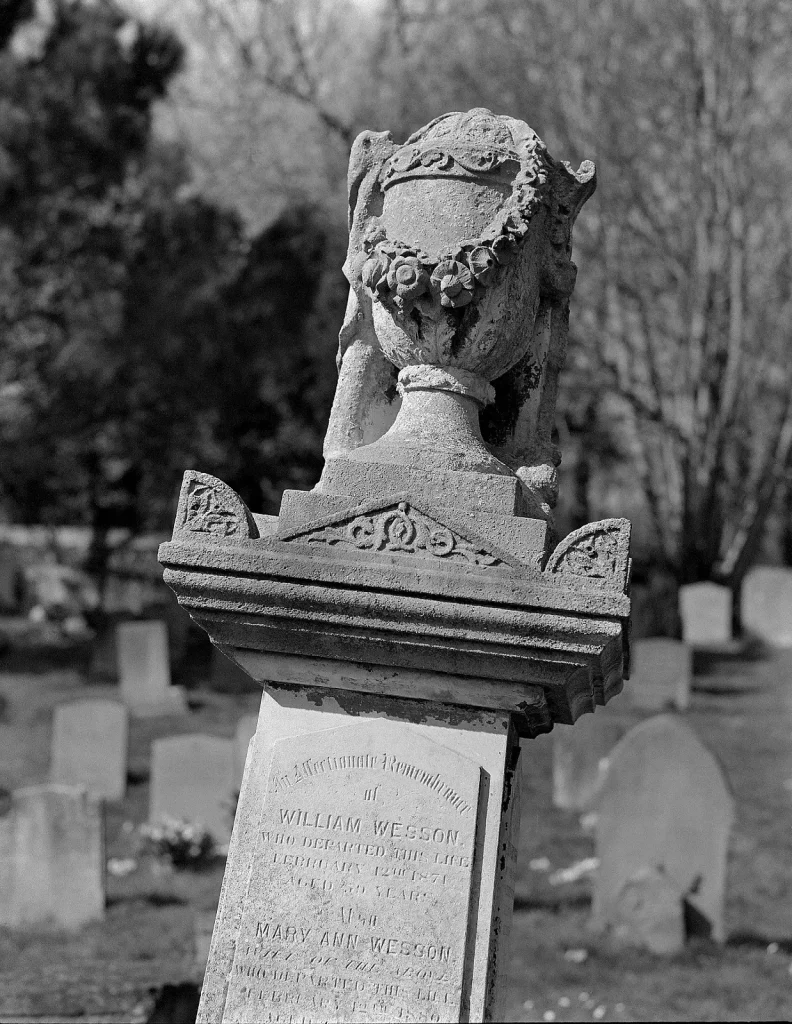
Fomapan 200, I’m not so in love with. But paired with an old bellows camera – my Agfa Isolette – where sharpness and fine grain are not necessarily the name of the game, then nice images can, of course, be created.
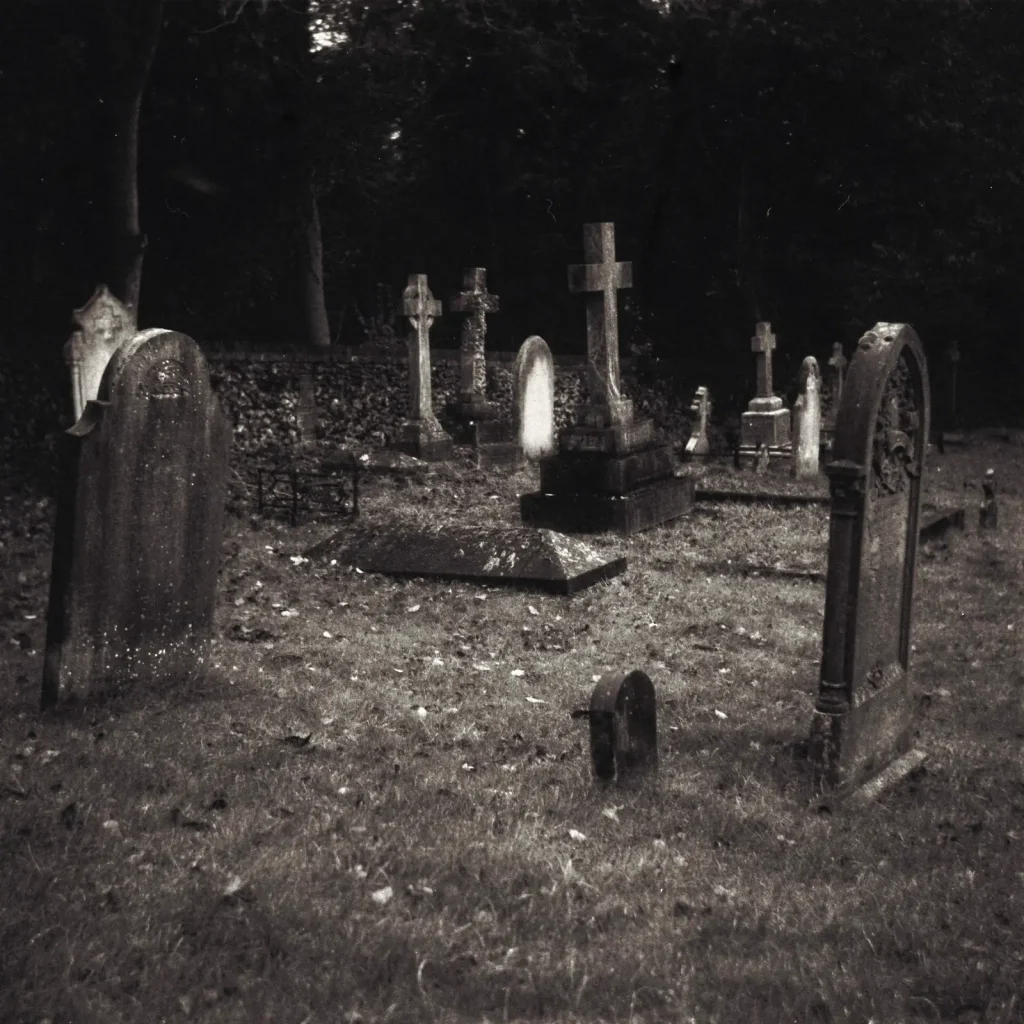
Over to 35mm and sticking with Agfa viewfinders, the next offering is the (often maligned) 1982 Optima Sensor Electronic Flash. One of their last cameras to be made, I really like using this model despite being zone focus. It has a knack of getting exposure just right, and I like to combine it with expired film – in this case Kodak VR400 Plus. Often the grass is left long but flowers do tend to poke their way through, hence the switch to colour film. It really is a beautiful site to visit in spring.
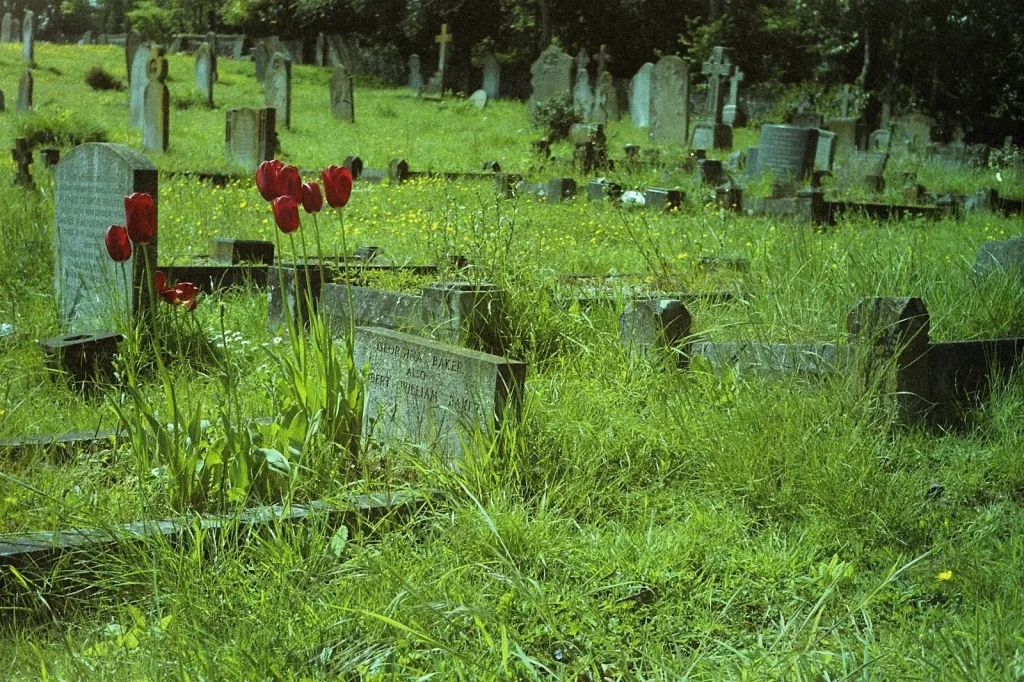
The fifth frame is Fuji C200 in a 1950s Paxette IIBL which was sitting in the cupboard waiting to be tested. Made by Braun, this has interchangeable lenses similar to the M39 screw mount. Unfortunately, I now know the meter is dead, rangefinder broken and frame lines wonky! Still, fun to test and maybe a pinhole conversion project.
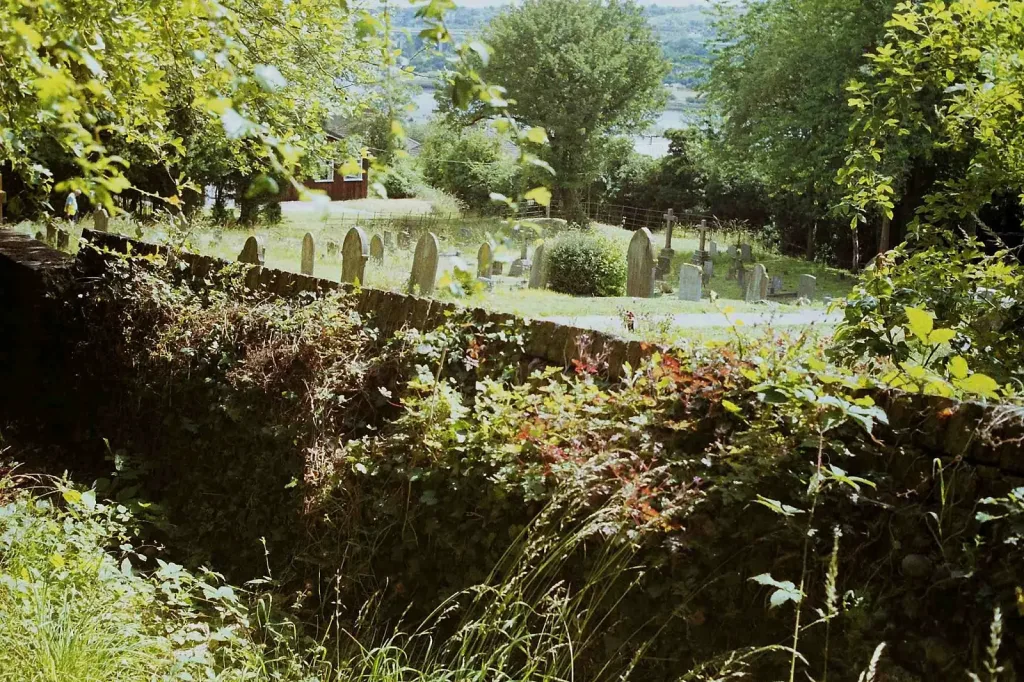
Thanks for reading,
Cheers, Rock.
Some of my work can be found at www.rocksreflex.com
Share this post:
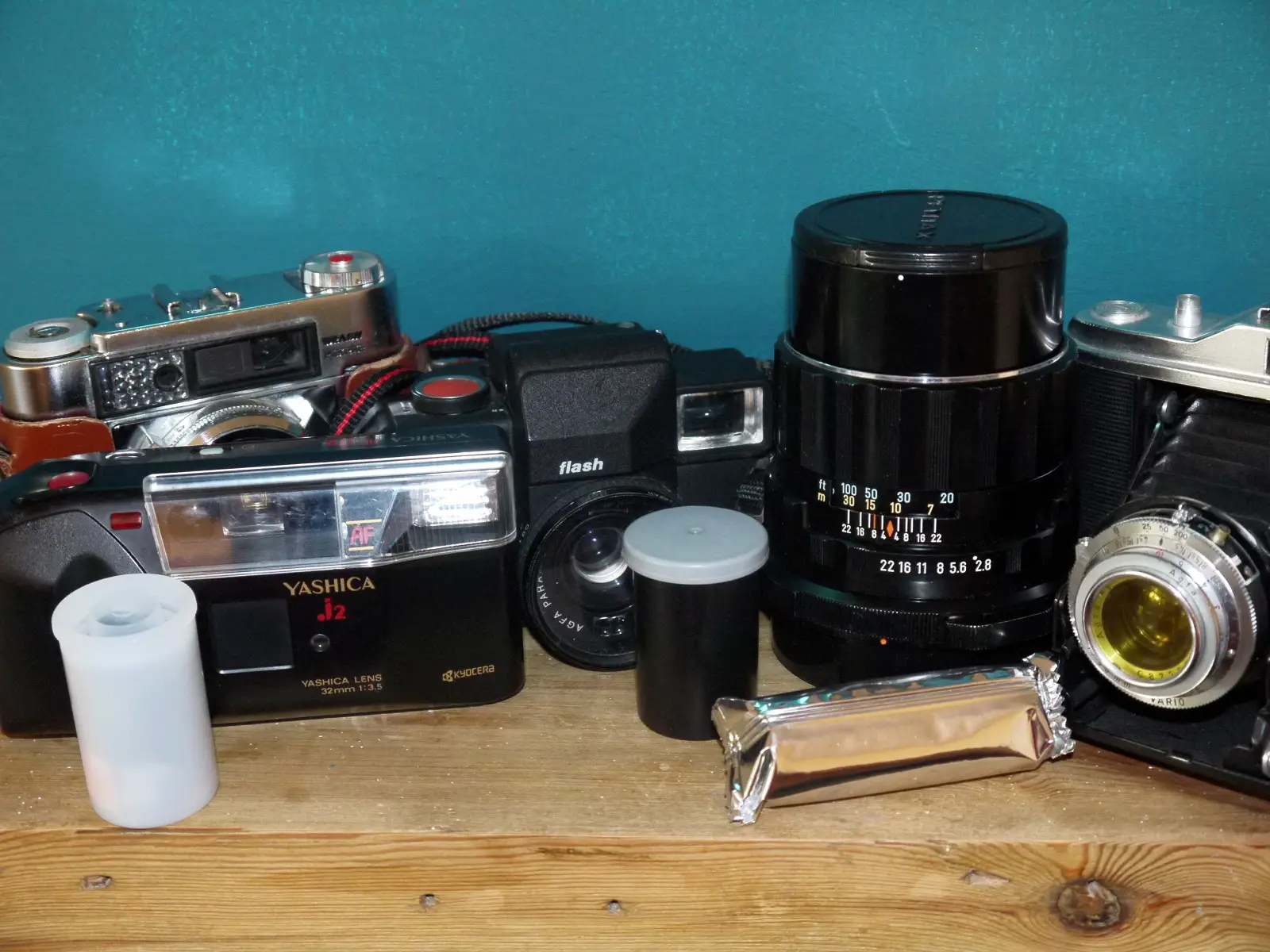
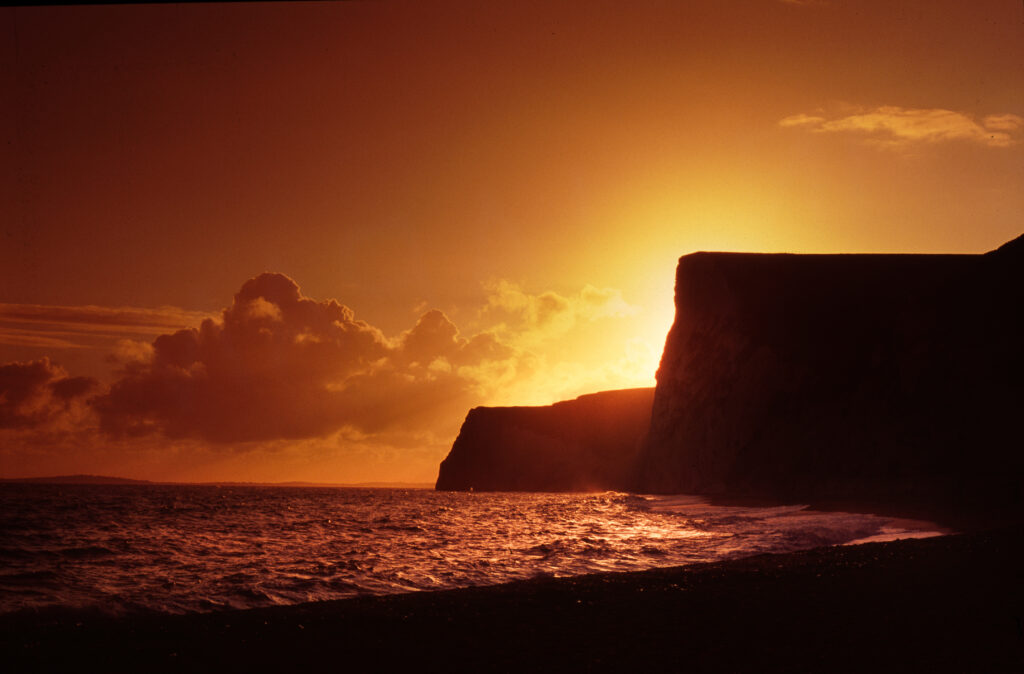
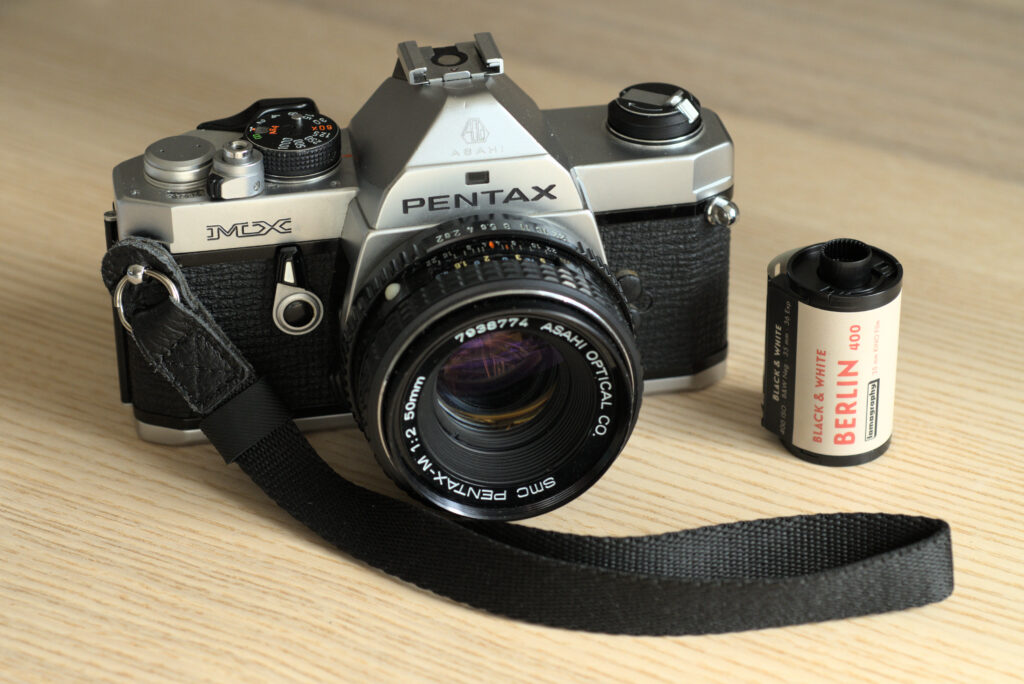
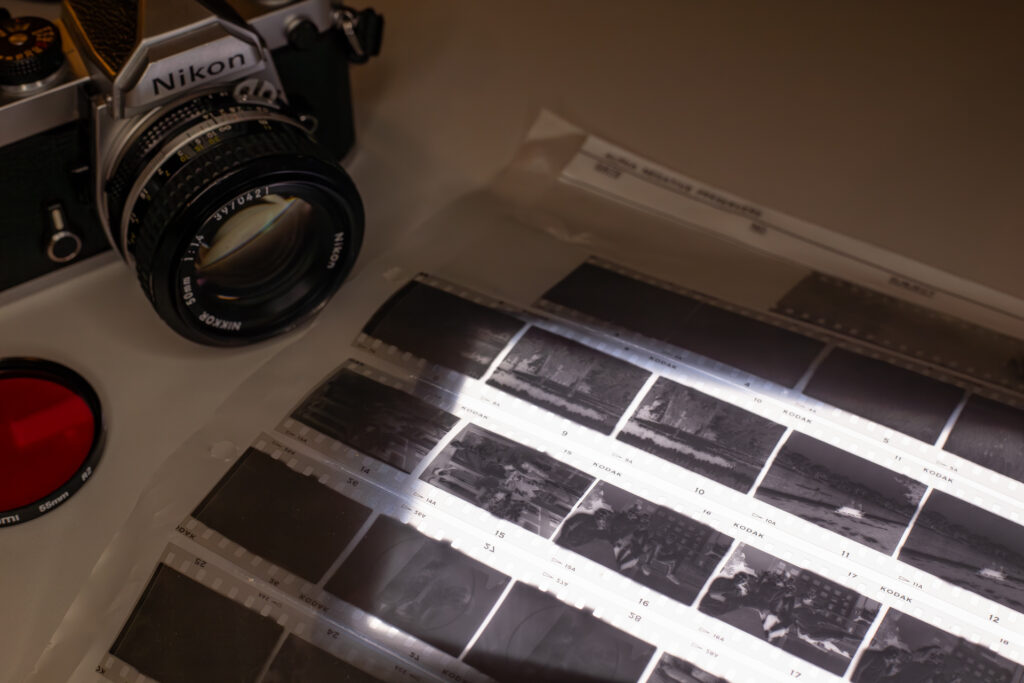
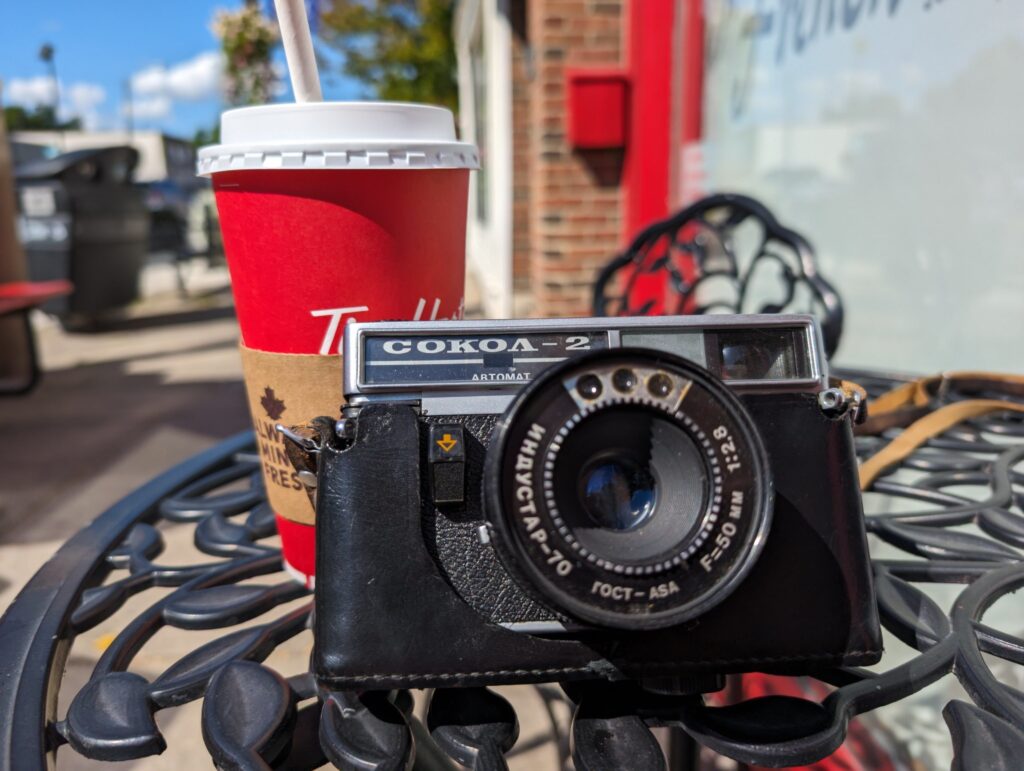




Comments
Martin on 5 frames with 5 cameras and 5 films in one graveyard – by Rock
Comment posted: 07/11/2019
I enjoyed your article, BTW.
Comment posted: 07/11/2019
Peter G. Johnson on 5 frames with 5 cameras and 5 films in one graveyard – by Rock
Comment posted: 07/11/2019
Comment posted: 07/11/2019
Charles Morgan on 5 frames with 5 cameras and 5 films in one graveyard – by Rock
Comment posted: 07/11/2019
Molly Miller on 5 frames with 5 cameras and 5 films in one graveyard – by Rock
Comment posted: 08/11/2019
Georgia on 5 frames with 5 cameras and 5 films in one graveyard – by Rock
Comment posted: 10/11/2019
5 Frames with 5 Chinons and 5 Films in One Graveyard - By Rock - 35mmc on 5 frames with 5 cameras and 5 films in one graveyard – by Rock
Comment posted: 18/01/2020
A Paxette Pinhole Conversion and a walk in the Countryside - By Rock - 35mmc on 5 frames with 5 cameras and 5 films in one graveyard – by Rock
Comment posted: 12/02/2020